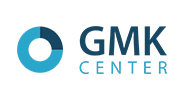
Interviews painted steel 1526 12 May 2025
Head of Metipol about the Ukrainian market of painted rolled products, company's work and product quality
The market of painted rolled products is one of the few segments of the domestic steel consumption market where there are significant opportunities for increasing domestic production. Last year, two new enterprises started their work in Ukraine at once, and their products began to displace imports. The former market leader – Chinese polymer rolled products – has largely left the Ukrainian market under the pressure of high anti-dumping duties, although it does not abandon its attempts to “enter” through other countries.
Denys Rysukhin, CEO of Metipol, told GMK Center about the current performance of the Ukrainian market of painted rolled products, the prospects of domestic production, the company’s work and the corporate conflict.
What results did the market of painted rolled products show in the first quarter of 2025?
– The volume of visible consumption of painted steel in Q1 amounted to about 55 thousand tons. It is by 5% lower than in the same period last year. It is worth noting the continuing trend towards import substitution. If last year in this period the share of Ukrainian producers amounted to 25%, this year – already 36%.
Domestic production continues to develop actively. Despite the ongoing difficulties in war conditions, and even the temporary stoppage of the leader of recent years Heavy Metal, Ukrainian producers continue to confidently increase their production, actively replacing imports. They managed to finish the first quarter with the growth by one third as compared to the last year – about 21 thousand tons of products were produced. However, the average utilization rate of five lines is only 36%, which is partly explained by the low season.
In less than two months of operation this year, Heavy Metal produced and shipped to the market 3 thousand tons of painted steel, including 330 tons for export. In mid-February, the enterprise was shut down.
Modul-Ukraine for the first quarter sold 6.4 thousand tons of painted coil, of which 400 tons were exported. Compared to the previous year, the sales of painted steel increased by 51%.
For imports, it was the worst quarter during the full-scale war – 35.5 thousand tons of painted steel. The decrease relative to the previous year amounted to 18.5%. The change in the structure of import by segments is characteristic. The decrease in volumes of the middle segment (India, Turkey, Vietnam, Korea), which started in the middle of last year, is gaining momentum – almost a twofold drop. At the same time, steel from Europe shows stable growth – plus 12%, and its share in imports jumped to 67% from 48%. The explanation lies precisely in the high competitiveness of the Ukrainian product, which operates mainly in the middle segment. Today the price advantage of imports is not so obvious and does not cover the services that can be provided by Ukrainian plants.
Exports in Q1 decreased to 1.1 thousand tons from 1.6 thousand tons due to the halt of export shipments by Heavy Metal.
What is the current price situation on the market?
– In addition to global trends affecting the price level, there is a fierce competition for customers between producers in Ukraine. The total volume of production capacity today is about 270 thousand tons, and their workload and current market share is clearly insufficient for profitable work. Under these conditions, the client wins – prices are at a rather low level, and any attempts to raise them are met with market resistance and insufficient demand.
How do you assess the level and nature of demand for polymer rolled products? How and under what influence has the consumption structure changed recently?
– If we believe the figures of visible consumption, today the market is in a stable state – in 2024 the demand for painted steel reached 292 thousand tons, which is 5% higher than the previous year, and the first quarter of this year is 5% worse than the same period last year.
However, several trends characterizing the current state of affairs stand out. The first is active import substitution, which I mentioned earlier. Ukrainian-made steel should become the largest segment already this year, overtaking Europe. The volume of the cheap segment (in fact, China) does not play a significant role anymore, having reduced to 8% of the market.
On the other hand, in pursuit of price and market share, new manufacturers and importers of the medium segment are reducing quality characteristics such as steel backing thickness and zinc content. This is a dangerous trend that will be difficult to reverse. However, the logic of the market pushing for these changes is simple – China, which is gone, held up to 65% of the market two years ago, which means that buyers are willing to compromise on quality for the sake of a low price.
The current state of the economy has exposed another problem – the solvency of the market has fallen significantly. Today, the first place in the choice of steel by processors is not the product itself, but payment terms. In essence, producers and traders are shifting to the role of a financial instrument of doing business for their customers.
How will Metipol’s policy change in the wake of the bankruptcy of Heavy Metal LLC?
– The bankruptcy of Heavy Metal was the result of a long-standing corporate conflict. Remaining its shareholder, we are interested in preserving this asset, so we are making efforts to bring it back to the market in the short term. We have not been able to integrate it into cooperation with other group companies to the extent we would have liked, but it has continued to develop, remaining the market leader in painted steel in Ukraine, ending 2024 with a record production of 28.5 thousand tons.
With the intention to resume production in Pervomaysk, we have retained the team of key specialists, and if possible we will transfer customers to the products of Modul-Ukraine. Taking into account the peculiarities of the produced raw materials (cold-rolled coil, galvanized coil), we have expanded the product line of painted steel at the expense of imported galvanized coil. We are talking about steel with high zinc content, structural steel grades and steel with high flatness requirements (e.g. for sandwich panel production). Thus, we intend to maintain Metipol Group’s share in the painted steel market in Ukraine.
What are the results of imposition of anti-dumping duties against polymer-coated rolled products from China?
– The results of the introduction of duties with the expected delay became noticeable in the second half of last year. Steel “washed out” from traders’ warehouses, and imports remained in limited specifications – mainly steel up to 0.2 mm thick.
The volume of 100 thousand tons of imports (by the end of 2023) was redistributed between Ukrainian producers and alternative importing countries. These are mainly India and Vietnam. It is easier to compete with these products, as their characteristics are closer to our standards, and the price advantage does not always overlap the service offered by Ukrainian producers.
Worries of some market players about a sharp drop in demand or the inability of local producers to satisfy it were not confirmed – the market showed growth.
I believe that it was a reasonable and timely decision. In fact, even with the emergence of two new ambitious producers, both our enterprises were able to show growth. Speaking about the interests of Ukraine, we got two new enterprises, production growth up to 96 thousand tons (for 2024) and reduction of imports.
There is also a plus for the end consumer – the market disappears steel with characteristics not designed for outdoor use. The average value of zinc content in Chinese samples tested by us does not exceed 20 g/sq. m, and the quality of polymer coating is not suitable for profiling. Often the end consumer, not knowing the characteristics of the product, succumbs to deception on the part of the seller. I am sure that there will be fewer counterfeits and more confidence in steel products.
How significant is the threat from Chinese rolled products “from Malaysia”?
– As for imports from Malaysia, we all realize that this is actually bypassing the duties imposed on Chinese products. Last year, 18.5 thousand tons of such steel was imported. The main problem of this steel is the creation of unequal conditions for market players. Those companies that have reoriented to alternative suppliers find themselves at a disadvantage relative to the violators.
We have always been in favor of fair competition, so we are making efforts to protect the interests of our group and the market as a whole. Already in the near future we will see the first results of launching an anti-dumping investigation against such imports.
How has the emergence of new producers of polymer rolled products in Ukraine changed the market?
– Last year can definitely be written down as an asset for Ukrainian producers. Almost all plants were able to show a significant increase in production, and a total of 96 thousand tons were produced. Starting from 2022 growth rates are at the level of 50-60% per year. To a large extent, this is due to import substitution – the market share of Ukrainian steel has grown to 30% by the end of 2024 against 21% a year earlier. The result of the first quarter of 2025 is even higher – growth of 36%.
We still have more than double potential for production growth based on the installed capacity, so the share of Ukrainian steel will continue to grow. Competition among Ukrainian producers has intensified with the entry of the ambitious Polystil company to a high level of utilization, as well as the commissioning of a new painting line in Zhytomyr.
Previously, you often complained about the low quality of imports. What results do steel tests in the company’s laboratory show now?
– I would note two trends here. Certainly, the average steel quality indicators have increased with the withdrawal of products from China. There are significantly fewer requests from the market for expertise with such a product.
On the other hand, in search of cheap alternatives, more and more importers are taking the middle segment towards lower characteristics. For example, painted coil from Turkey and Vietnam, which used to be supplied with zinc content of 100 gr/sq. m and higher, now has 50-70 gr/sq. m. This is a chance for Ukrainian producers to further differentiate themselves from imports by offering a better quality warranty product.
What is the purpose of introducing a new certification procedure for polymer-coated rolled products in Ukraine?
– Ukraine adopts the EN 1090 standard to harmonize with European norms and increase the competitiveness of its construction and steel products on export markets. This process takes place within the framework of EU requirements in the context of the Association Agreement with the EU. For the Ukrainian consumer it means confidence in the quality and safety of building structures, and for manufacturers it means increased confidence on the part of consumers and partners.
Unfortunately, this standard does not apply to imported products, so it will not lead to their qualitative improvement in the short term. However, step by step we intend to bring our market to a civilized state.
What are your forecasts for the development of Ukrainian rolled products with polymer coating in 2025?
– If there are no drastic changes in military and political life in Ukraine, we do not forecast market growth this year – demand will remain at the level of 280-300 thousand tons of painted steel. There is definitely a reserve from the pent-up demand and recovery of the country, for which we should be ready. But it will be possible to reveal this potential only after the end of the war.
At the same time, we expect further growth of domestic production up to the level of 120-130 thousand tons in 2025 by increasing both the share in the domestic market and exports.
Exports today have great potential, but face a number of problems. Among them are high production costs given the high energy costs, limitations in logistics (including import of raw materials). Export deals often have negative margins, but are important for us to maintain production volumes and presence in foreign markets.





